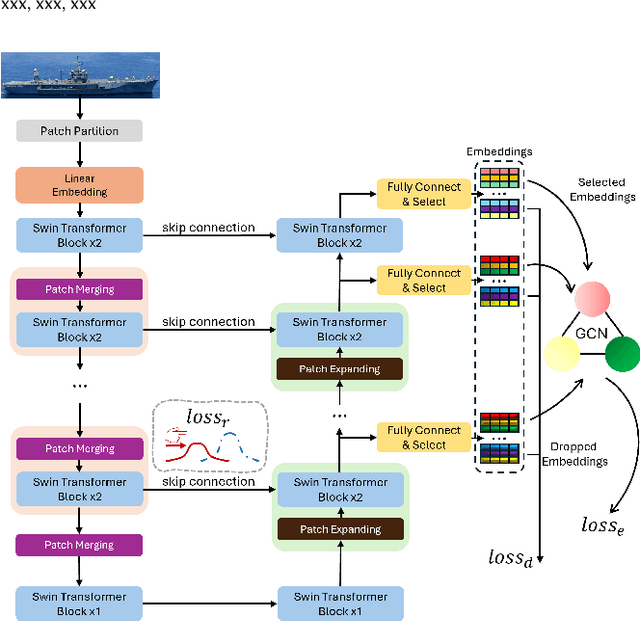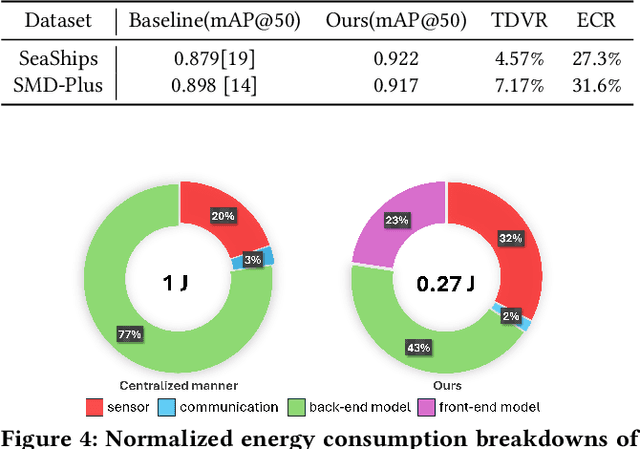Arghavan Rezvani
MoME: Mixture of Visual Language Medical Experts for Medical Imaging Segmentation
Oct 30, 2025Abstract:In this study, we propose MoME, a Mixture of Visual Language Medical Experts, for Medical Image Segmentation. MoME adapts the successful Mixture of Experts (MoE) paradigm, widely used in Large Language Models (LLMs), for medical vision-language tasks. The architecture enables dynamic expert selection by effectively utilizing multi-scale visual features tailored to the intricacies of medical imagery, enriched with textual embeddings. This work explores a novel integration of vision-language models for this domain. Utilizing an assembly of 10 datasets, encompassing 3,410 CT scans, MoME demonstrates strong performance on a comprehensive medical imaging segmentation benchmark. Our approach explores the integration of foundation models for medical imaging, benefiting from the established efficacy of MoE in boosting model performance by incorporating textual information. Demonstrating competitive precision across multiple datasets, MoME explores a novel architecture for achieving robust results in medical image analysis.
XOCT: Enhancing OCT to OCTA Translation via Cross-Dimensional Supervised Multi-Scale Feature Learning
Sep 09, 2025Abstract:Optical Coherence Tomography Angiography (OCTA) and its derived en-face projections provide high-resolution visualization of the retinal and choroidal vasculature, which is critical for the rapid and accurate diagnosis of retinal diseases. However, acquiring high-quality OCTA images is challenging due to motion sensitivity and the high costs associated with software modifications for conventional OCT devices. Moreover, current deep learning methods for OCT-to-OCTA translation often overlook the vascular differences across retinal layers and struggle to reconstruct the intricate, dense vascular details necessary for reliable diagnosis. To overcome these limitations, we propose XOCT, a novel deep learning framework that integrates Cross-Dimensional Supervision (CDS) with a Multi-Scale Feature Fusion (MSFF) network for layer-aware vascular reconstruction. Our CDS module leverages 2D layer-wise en-face projections, generated via segmentation-weighted z-axis averaging, as supervisory signals to compel the network to learn distinct representations for each retinal layer through fine-grained, targeted guidance. Meanwhile, the MSFF module enhances vessel delineation through multi-scale feature extraction combined with a channel reweighting strategy, effectively capturing vascular details at multiple spatial scales. Our experiments on the OCTA-500 dataset demonstrate XOCT's improvements, especially for the en-face projections which are significant for clinical evaluation of retinal pathologies, underscoring its potential to enhance OCTA accessibility, reliability, and diagnostic value for ophthalmic disease detection and monitoring. The code is available at https://github.com/uci-cbcl/XOCT.
Recoverable Anonymization for Pose Estimation: A Privacy-Enhancing Approach
Sep 01, 2024Abstract:Human pose estimation (HPE) is crucial for various applications. However, deploying HPE algorithms in surveillance contexts raises significant privacy concerns due to the potential leakage of sensitive personal information (SPI) such as facial features, and ethnicity. Existing privacy-enhancing methods often compromise either privacy or performance, or they require costly additional modalities. We propose a novel privacy-enhancing system that generates privacy-enhanced portraits while maintaining high HPE performance. Our key innovations include the reversible recovery of SPI for authorized personnel and the preservation of contextual information. By jointly optimizing a privacy-enhancing module, a privacy recovery module, and a pose estimator, our system ensures robust privacy protection, efficient SPI recovery, and high-performance HPE. Experimental results demonstrate the system's robust performance in privacy enhancement, SPI recovery, and HPE.
EcoSense: Energy-Efficient Intelligent Sensing for In-Shore Ship Detection through Edge-Cloud Collaboration
Mar 26, 2024



Abstract:Detecting marine objects inshore presents challenges owing to algorithmic intricacies and complexities in system deployment. We propose a difficulty-aware edge-cloud collaborative sensing system that splits the task into object localization and fine-grained classification. Objects are classified either at the edge or within the cloud, based on their estimated difficulty. The framework comprises a low-power device-tailored front-end model for object localization, classification, and difficulty estimation, along with a transformer-graph convolutional network-based back-end model for fine-grained classification. Our system demonstrates superior performance (mAP@0.5 +4.3%}) on widely used marine object detection datasets, significantly reducing both data transmission volume (by 95.43%) and energy consumption (by 72.7%}) at the system level. We validate the proposed system across various embedded system platforms and in real-world scenarios involving drone deployment.
A Plug-in Tiny AI Module for Intelligent and Selective Sensor Data Transmission
Feb 03, 2024Abstract:Applications in the Internet of Things (IoT) utilize machine learning to analyze sensor-generated data. However, a major challenge lies in the lack of targeted intelligence in current sensing systems, leading to vast data generation and increased computational and communication costs. To address this challenge, we propose a novel sensing module to equip sensing frameworks with intelligent data transmission capabilities by integrating a highly efficient machine learning model placed near the sensor. This model provides prompt feedback for the sensing system to transmit only valuable data while discarding irrelevant information by regulating the frequency of data transmission. The near-sensor model is quantized and optimized for real-time sensor control. To enhance the framework's performance, the training process is customized and a "lazy" sensor deactivation strategy utilizing temporal information is introduced. The suggested method is orthogonal to other IoT frameworks and can be considered as a plugin for selective data transmission. The framework is implemented, encompassing both software and hardware components. The experiments demonstrate that the framework utilizing the suggested module achieves over 85% system efficiency in terms of energy consumption and storage, with negligible impact on performance. This methodology has the potential to significantly reduce data output from sensors, benefiting a wide range of IoT applications.
 Add to Chrome
Add to Chrome Add to Firefox
Add to Firefox Add to Edge
Add to Edge